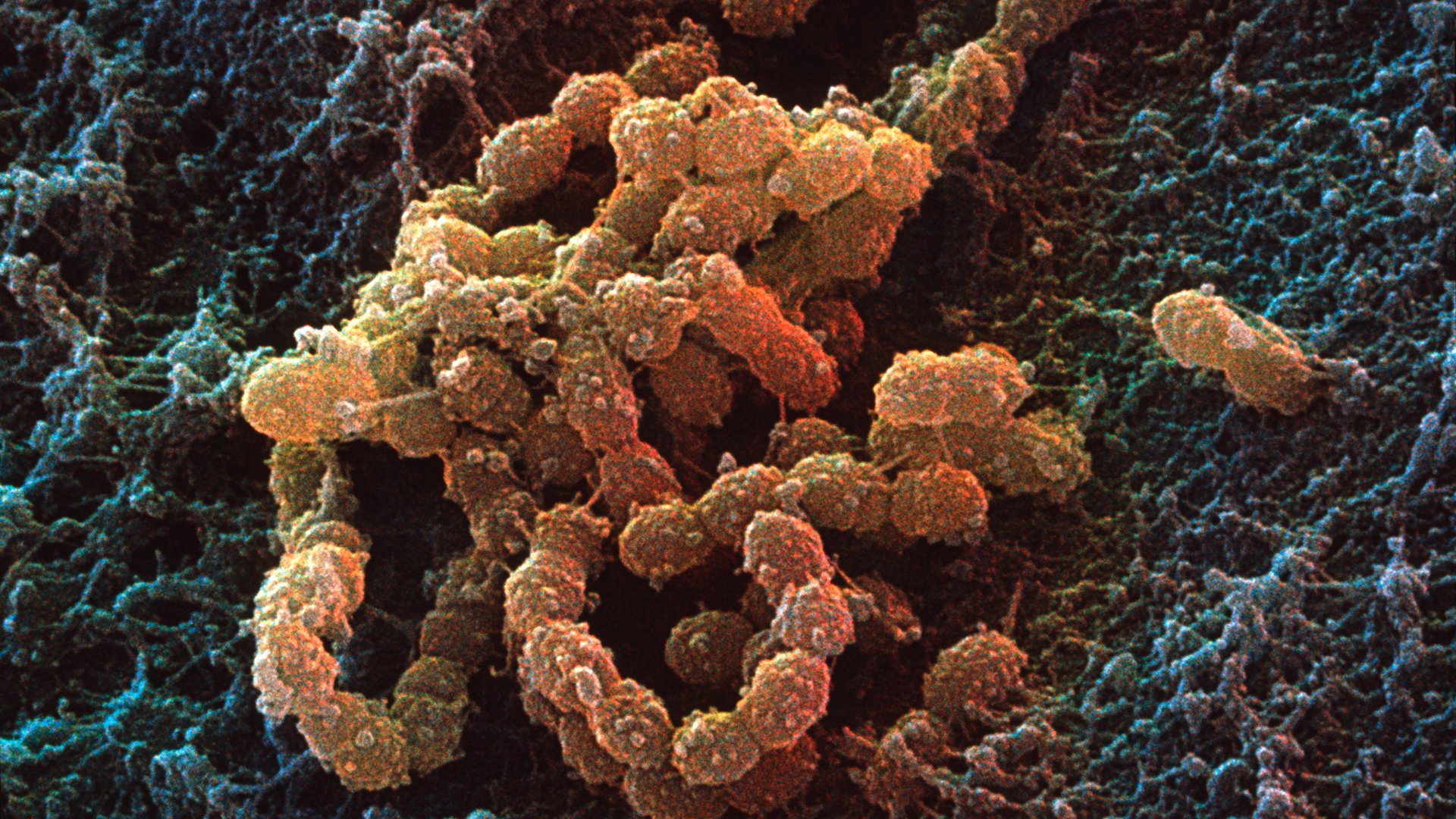There are many different species of the Streptococcus genus. Each one has its own habitat and activities.
There are many different species of the Streptococcus genus. Each one has its own habitat and activities.
Chain
Bacteria come in all shapes and sizes. Nearly all Streptococcus bacteria form long series of links, making a colony resemble a chain. The name Streptococcus comes from the Greek ‘streptos’ which means ‘easily twisted or bent’.
From cheese to plaque
Most Streptococcus bacteria are harmless. Streptococcus thermophilus is even used in the production of yoghurt and various kinds of cheese. Their habitats include in our intestine, upper respiratory tract and on the skin. But also in our mouth, the home of Streptococcus mutans. It is not such a likeable species. These bacteria break down sugars to produce acids which cause tooth decay.
Evasion
Most Streptococcus bacteria are harmless or even essential for man. Some species, however, can be dangerous. For the most part though, they only cause problems in people with very low resistance to infection. Streptococcus pyogenes is an example of a harmful genus. It causes parts of its cell to resemble human tissue in order to evade the immune system.

